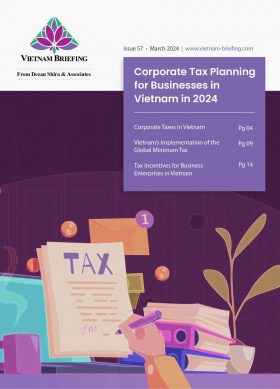Vietnam’s National Electricity Development Plan 2021-2030: Roadmap Approved
Vietnam’s government has approved a roadmap to implement the National Electricity Development Plan 2021 to 2030 (Power Development Plan 8 (PDP8)). We discuss key points in the roadmap and ongoing government efforts towards electricity pricing and energy management.
In a significant move towards sustainable development, Vietnam’s Deputy Prime Minister Tran Hong Ha has signed a decision approving a roadmap for the implementation of the National Electricity Development Plan 2021 to 2030, with a vision to 2050. This masterplan is commonly known as Power Development Plan 8 (PDP8).
This decision reflects Vietnam’s commitment to accelerating the transition from conventional fossil fuels to cleaner and renewable energy sources, addressing environmental concerns, reducing greenhouse gas emissions, and aligning with global sustainability targets.
Vietnam has committed to net-zero emissions by 2050.
Read: Vietnam Government Approves Power Development Plan 8
Key targets of the National Electricity Development Plan
By 2030, Vietnam aims to diversify its energy mix significantly. According to the approved roadmap, the country plans to bolster its capacities in thermal, LNG thermal, and coal-fired thermal power plants to 14,930 MW, 22,400 MW, and 30,127 MW, respectively.
Meanwhile, the focus will be on ramping up renewable energy sources, with capacities for offshore wind, onshore wind, and biomass power reaching 6,000 MW, 21,880 MW, and 1,088 MW, respectively. Additionally, electricity generated from waste is expected to contribute 1,182 MW, alongside an additional capacity of rooftop solar power set at 2,600 MW. To facilitate efficient energy storage, a total capacity of 300 MW for battery storage is also planned.
Recognizing the need for flexibility in power sources, the roadmap earmarks the development of 300 MW of flexible power sources, particularly in areas with possible shortages of reserve capacity and utilizing existing electricity grid infrastructure.
Moreover, Vietnam anticipates importing approximately 5,000 MW of electricity from Laos, a figure that could increase to 8,000 MW under favorable conditions and reasonable costs.
In a bid to leverage renewable energy for export, the roadmap identifies central and southern regions as potential hubs, with export capacities ranging from 5,000 MW to 10,000 MW for feasible projects. Additionally, the plan outlines crucial transmission grid projects, emphasizing investments in interconnected grids with neighboring countries to foster regional energy cooperation.
Furthermore, the roadmap includes an ambitious rural electrification program, aiming to provide electricity to 2,478 small- and medium-sized pumping stations in the Mekong Delta region, while also extending electricity access to remote islands in Quang Tri, Kien Giang, and Ba Ria – Vung Tau provinces through national grid connections or renewable energy sources.
In a move to nurture a robust industrial and service ecosystem for renewable energy, the roadmap envisages the establishment of two interregional industrial and service centers dedicated to renewable energy research and development by 2030.
Vietnam’s commitment to this comprehensive roadmap signifies a pivotal step towards a sustainable energy future, not only ensuring energy security but also fostering economic growth and environmental protection. With concerted efforts and strategic investments, Vietnam could emerge as a regional leader in clean energy transition.
Vietnam’s electricity and energy management: Other ongoing efforts
Power prices to be adjusted every three months
Vietnam will adjust its average retail electricity price every three months starting May 15, 2024. This follows from the government’s Decision No. 05/2024/QD-TTg to regulate the country’s electricity price adjustment mechanism.
The decision permits the modification of average retail prices to reflect changes in input costs, encompassing production, transmission, distribution, management, and related services, among others.
If input costs decrease by 1 percent compared to the current average retail price, the price must be adjusted downwards. Conversely, if input costs surge by over 3 percent, the price may be adjusted upwards, with a minimum interval of three months between each adjustment. Previously, the minimum waiting period between price adjustments was six months.
The Ministry of Industry and Trade (MoIT) will establish a framework for calculating average retail electricity prices, implement and adjust prices, and oversee the respective periods. Vietnam Electricity (EVN) has the authority to implement a price increase.
- For a price increase between 3-5 percent, EVN must report to the MoIT within five working days from the commencement of an adjustment, alongside other relevant ministries and governmental agencies, to establish a schedule for inspection and supervision during the period.
- For price increases between 5-10 percent, the MoIT will have to respond within 15 working days.
- If EVN proposes a price increase exceeding 10 percent, MoIT will collaborate with other ministries and governmental agencies for consultations. Subsequently, after a period of co-consultation, MoIT will submit a report to the central government and the Prime Minister for review.
Continued cooperation with Japan on green transition projects
During a meeting between Vietnam’s Deputy Prime Minister and the Managing Director of the Japan Bank of International Cooperation (JBIC) on March 29, both parties acknowledged the pivotal role of banks and financial mechanisms in facilitating green transition projects.
Vietnam and Japan collaborate extensively within bilateral and multilateral frameworks, including the Asia Zero Emission Community (AZEC) Initiative. Vietnam, being the first partner supported by Japan in the AZEC initiative, has seen significant cooperation and support from JBIC, including loans and assistance to Japanese businesses operating in Vietnam. JBIC has pledged continued support to Vietnam’s green energy development efforts by introducing Japanese and European technologies to help reduce carbon emissions and improve energy efficiency. These initiatives, including AZEC and the Just Energy Transition Partnership (JETP), are in alignment with the objectives established at the 26th United Nations Climate Change Conference (COP26).
Technical support on transitioning from coal
The United Nations Development Program (UNDP) in Vietnam convened a technical meeting on March 28 focused on developing a roadmap for transitioning from coal-fired power generation to sustainable alternatives.
The meeting aimed to disseminate the latest information on policies and technologies relevant to the transition process, including the best available techniques, associated costs, benefits, and potential impacts. Additionally, discussions centered on options for decommissioning, repurposing, and transforming various types of coal-fired power plants.
The event gathered stakeholders from diverse sectors, including Vietnamese agencies, members of the International Partners Group (IPG) and the Glasgow Financial Alliance for Net Zero (GFANZ), coal-fired power plants, financial institutions, banks, investors, development partners, and non-governmental organizations.
About Us
Vietnam Briefing is published by Asia Briefing, a subsidiary of Dezan Shira & Associates. We produce material for foreign investors throughout Asia, including ASEAN, China, and India. For editorial matters, contact us here and for a complimentary subscription to our products, please click here. For assistance with investments into Vietnam, please contact us at vietnam@dezshira.com or visit us at www.dezshira.com.
Dezan Shira & Associates assists foreign investors throughout Asia from offices across the world, including in Hanoi, Ho Chi Minh City, and Da Nang. We also maintain offices or have alliance partners assisting foreign investors in China, Hong Kong SAR, Dubai (UAE), Indonesia, Singapore, Philippines, Malaysia, Thailand, Bangladesh, Italy, Germany, the United States, and Australia.
- Previous Article Il panorama degli IDE in Vietnam nel 2024 è pronto a registrare una forte crescita
- Next Article Vietnam’s State of the Economy: Q1 2024 Report








